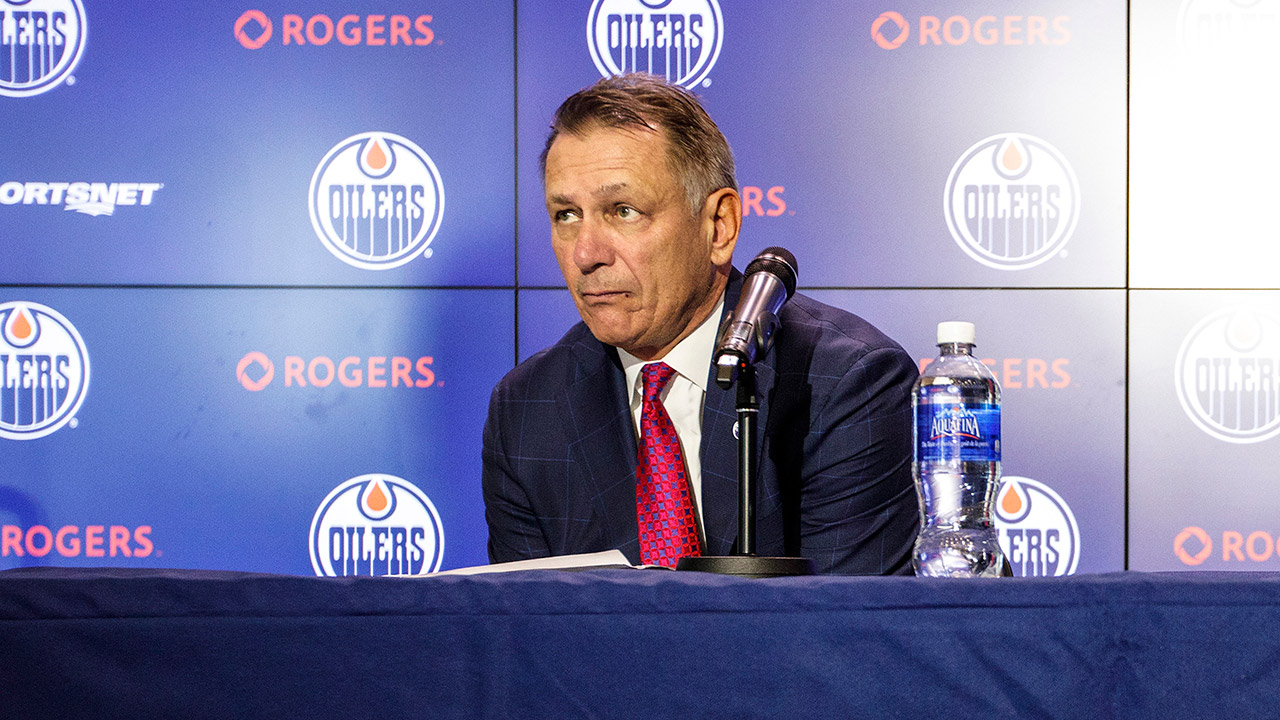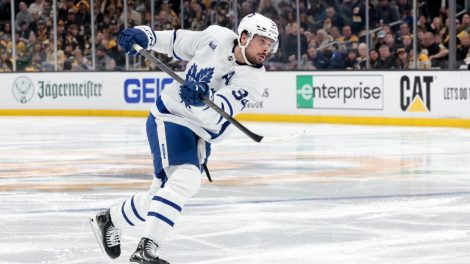EDMONTON — The term “cap issues” is truly relative.
There are Toronto/Tampa cap issues, two teams that have as much wiggle room as Shaquille O’Neal in a middle seat. And then there are teams like the Edmonton Oilers — and there are 15-20 of them — who aren’t entirely comfortable, but should be able to make things work without putting a visible dent in what they have built thus far.
Oilers general manager Ken Holland, like 30 other GMs across the league, had all his preparation thrown out the window when the league paused and the revenues (on which the cap relies) stopped flowing.
“We were told at the managers’ meetings in early March that the (salary cap) projections for the 2020-21 cap would be from $84 to $88 million. Now, we’re heading into the unknown,” said Holland. “For planning purposes, I’m just going to work off of this year’s number of $81.5 million. Nobody knows what the cap will end up being.”
So, let’s adopt Holland’s pragmatic approach, that the cap will stay the same for the 2020-21 season. Truly, it does not behoove the NHL Players’ Association or the league to have a cap at anywhere less than that.
[snippet id=3816507]
The Oilers will watch retained salary for Sam Gagner ($315,000), a $300,000 buy-out for Eric Gryba, and salaries for UFAs Mike Green ($2.69 million), Brandon Manning ($1.175 million), Mike Smith ($2 million), Markus Granlund ($1.3 million), Riley Sheahan ($900,000), Tyler Ennis ($800,000) and Patrick Russell ($700,000) all fall off the books this offseason. Of that $9.48 million, the only guys Holland will look to re-sign will be Smith, and possibly Ennis, Sheahan and Russell, with Granlund rumoured to be heading to the KHL. The latter three forwards would be bargain signings: one-year, less than $1.1 million.
If teams were to receive a compliance buy-out Holland could spend it on James Neal, shaving $5.75 million of his cap and solving any issues in one fell swoop. But that, like everything else surrounding the coming off-season, is but a rumour.
However, you’ve got to start somewhere. How will the Edmonton Oilers be affected by a stagnant, $81.5 million cap? Let’s take a look:
Forwards
Holland got an early start, re-signing depth forwards Joakim Nygard, whose salary goes from $925,000 to $875,000, and Gaetan Haas ($925,000 to $915,000) — two players on one-year deals who both took a pay cut. Edmonton liked Ennis (UFA) during his short stint there (nine games, four points), but their most pressing forward is another trade deadline acquisition, pending restricted free agent Andreas Athanasiou.
Athanasiou has arbitration rights. Holland will likely qualify him at his current salary of $3 million, but won’t want to go much higher than that on a player who didn’t show much in the nine games he played for Edmonton (1-1-2). Athanasiou had 30 goals in the first year of his current deal, but only produced 11-15-36 in Year 2 last season.
If he takes Edmonton to arbitration and becomes a $4 million player, that will impact the Oilers’ cap perhaps more than the value of the player. The one way to avoid that would be simply not to qualify Athanasiou and let him go or walk away from arbitration — but after giving up two second-round draft picks to acquire him at the deadline, those would be prickly pills to swallow for Holland.
Normally, a player in that price range wouldn’t cost the GM any sleep. This summer? Everything is going to be different.
[snippet ID=3322139]
Defence
Any issues the Oilers have on their blue-line are offset, but the fact is that they have a pretty decent and relatively young D-corps. Re-signing 25-year-old Darnell Nurse to a two-year, $11.2 million deal in February was good for both sides, considering the current uncertainty.
“You want to be good on ‘D’ and I think we are good — and deep — on defence,” Holland said. “And we have some youth coming. Dmitri Samorukov is a prospect. (Evan) Bouchard, (Fillip) Broberg are prospects. Even Ethan Bear and Caleb Jones (both 22) are still young… Nurse is still 25. Klef (Oscar Klefbom) is 26. It’s a relatively young D-corps.”
In fact, Holland’s two cap issues are both on his third pairing, as pending RFA Matt Benning will need a raise from his current $1.9 million wage (but how much?), and veteran Kris Russell has one more year left at $4 million. The problem solver would be to move Russell, who is still every bit a third-pairing NHL defenceman but is clearly over-paid in that role.
Bear is coming out of his entry-level contract and has little bargaining power. But if you were ranking rookie D-men from the 2019-20 NHL season, he would make the top five. As for Green, he is now a $1.5 million player who the Oilers would likely consider bringing back at somewhere around that number.
But this is how things work: If Russell’s money stays on the books there will be no Green, and even Benning will feel the pinch in his negotiations with, at best, a flat cap expected.
Bear will get paid, but not as handsomely as he would if he had arbitration rights. Not to worry — he’s 22, and will have a few more turns at the bargaining table with much more clout.
Goalies
In the court of public opinion, Mikko Koskinen’s play last season moved his contract from the category of “grossly overpaid” to “do it again for $4.5 million and we’ll stop complaining about this deal.” In many of his starts he looked very much like a $4.5 million goalie, and Koskinen is under contract for two more seasons at that number.
Smith earned bonus money on top of his $2 million deal, and he is a UFA at age 38. The two gave Edmonton a tandem that was more than sufficient, and we’ll guess the Oilers would love to have Smith back — but at no more than his $2 million base from last season.
Smith’s response would be that the team has nothing in their pipeline that is even close to ready to replace him, so Holland may have to throw some bonus money at Smith to get him back. There is a deal to be made here.
[snippet id=4888368]
Overall Plan
It’s pretty clear: Green, Russell, Benning and Athanasiou will not all be in the Oilers opening night lineup next season, whenever that may be. Can Holland move Russell, and retain a bit of salary, to a team that needs what he brings? Possibly.
But the good news is, if Russell plays out his deal in Edmonton, he will contribute as a bonafide third-pairing defenceman whose value to his teammates is forever underestimated by the Fancy Stats set. There are worse problems to have.
All in all, Edmonton is tight on the cap to the extent they won’t be players in free agency whenever that season opens. But they won’t be forced to let good players leave either, which should allow last year’s playoff team to be next year’s playoff team.
“You’re never totally happy,” Holland said of his cap. “I analyze the way our team played — second in our division and fifth in the West in overall points — I’m happy with the way we took a step in the second half, the last 30 games. We had Connor and Klef go down inside those last 30 games and we had guys step up internally, which is a really good sign.”
The Oilers are a good team. Getting better, in a flat cap scenario, will have to happen from within.
[relatedlinks]










